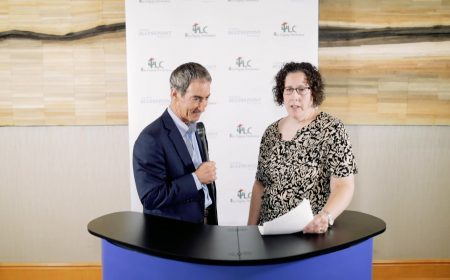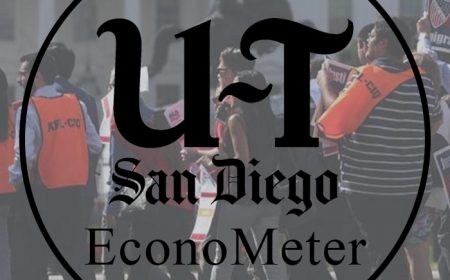State of the Hospitality Market
By: Robert A. Rauch, CHA
Today’s economy has had an enormous impact on the fortunes of the U.S. lodging industry. Some markets have been impacted more than others. Thankfully, for San Diego, the access to millions of potential travelers within a short driving distance, along with a diverse economy and a strong convention center, has lessened the blow. This article seeks to show how San Diego is faring vis a vis overall industry financial performance.
According to Smith Travel Research, (STR) the U.S. hotel industry is projected to end 2010 with increases in two of the three key performance measurements, according to their most recent forecast update earlier this month.
STR projects 2010 occupancy will increase 4.4 percent to 57.1 percent, average daily rate (ADR) is expected to end the year virtually flat with a 0.1 percent decrease to US$97.74, and revenue per available room (REVPAR) will rise 4.3 percent.
STR expects that supply will grow 2.2 percent during 2010, and demand will increase 6.6 percent. They further project the industry will end 2011 with increases in all three key metrics. Occupancy is forecast to rise 1.4 percent to 57.9 percent, ADR is expected to be up 3.9 percent to US$101.55, and REVPAR is projected to rise 5.3 percent.
The overall U.S. economy has a significant impact on demand for hotel rooms. The increased demand from the slowly growing economy is led by a combination of leisure travelers, gradually returning corporate profits, and a desire to end this “great recession.” Q1 gross domestic product has been revised downward twice now to an annualized rate of 2.7 percent and employment is growing very slowly. We expect slow growth for the economy with no signs of inflation and no signs of an imminent “double-dip.”
According to e-forecasting.com, the Hotel Industry Pulse index, or HIP, increased 3.8 percent in July. This comes after a two percent increase in June. HIP is an indicator that gauges business activity in the United States hotel industry in real-time, similar to a gross domestic product measure for the industry. The latest monthly change brought the index to a reading of 89.9. The index was set to equal 100 in the year 2000.
E-forecasting.com indicated that HIP’s six-month growth rate, which historically has signaled turning points in U.S. hotel business activity, continued to improve. After 20 months of the six-month growth rate being negative, the rate has gone up six consecutive months. In July, the six-month growth improved upon June’s growth of 10.8 percent by gaining 17.5 percent. This compares with a long-term growth rate of 3.2 percent.
In San Diego, the leading economic indicators are up for the 15th consecutive month according to the Burnham-Moores Center for Real Estate at the University of San Diego. Will average rate growth finally return so that profits in the lodging sector will improve? In San Diego’s hotel sector, the second quarter of 2010 is moving toward positive growth in revenue per available room (REVPAR) based on increases in demand (rooms consumed) of 7.7 percent and decreases in average rate of 6.1 percent for year to date 2010 through June.
Nationally, Steve Swope, CEO of Rubicon says, “The average daily rate (ADR) shortfall is narrowing even further than we reported last month.” Ergo, REVPAR trends will be up for Q3 according to my review of the summer Smith Travel Research (STR) reports on San Diego. Hotel financial performance in San Diego will remain well below the peak of 2008 with a significant impact from both rate discounting caused in part by a reliance on the online travel agencies (OTAs) and a lack of group business.
While a return to early 2008 levels of business travel is not yet likely, a significant amount of deferred business travel is having an upward impact on room demand, according to a Tourism Economics report ordered by the San Diego Convention & Visitors Bureau (ConVis). Room demand has grown in each of the first 6 months of 2010. Group hotel bookings remain significantly weaker than transient room demand, but San Diego hotels have outperformed the state of California and the U.S. in terms of both demand and occupancy growth according to the report. For the first time in 2010, average room rates increased in San Diego albeit for a .4 percent increase in June.
Occupancy levels through June, 2010 are 65.6 percent at an average rate of $117.96, up from 63.1 percent occupancy but down in ADR from $124.24. The ConVis forecast is for a year end 65.6 percent at $121.65, well beyond the national average. A return to 70 percent occupancy levels enjoyed by San Diego as recently as 2008 is not forecast to occur until 2013. At that time, there should be sufficient pressure to push rates up above the cost of inflation.
Rauch is a hotel owner/operator. His firm, R. A. Rauch & Associates, Inc. manages and asset manages hotels in the western U.S. Rauch is founder of www.hotelguru.com and teaches a class on hospitality entrepreneurship at the college level.







